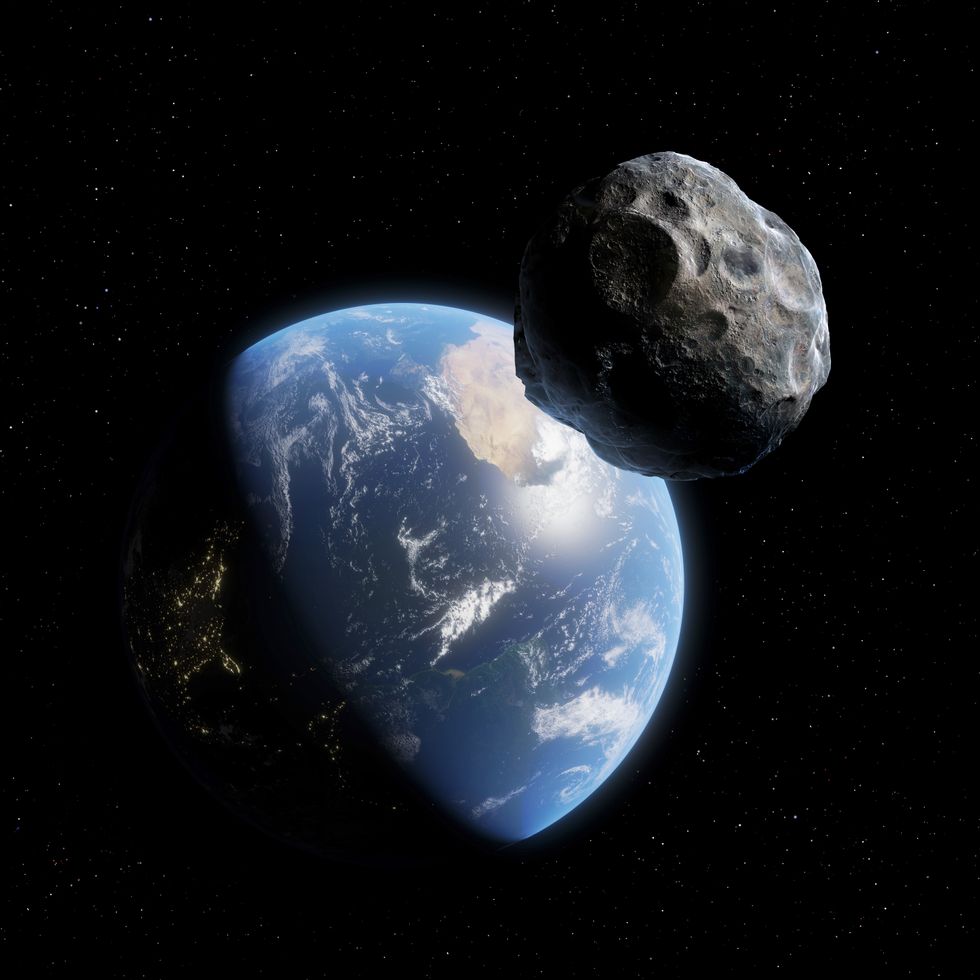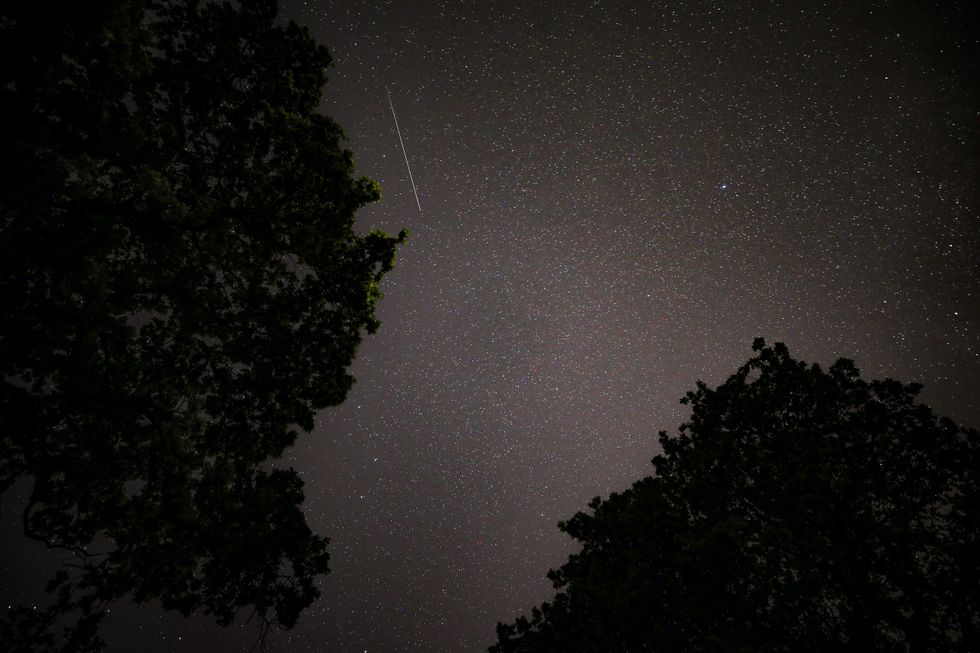Asteroid warning issued by Nasa as meteor travelling at 19,000 miles an hour to narrowly miss Earth

The space rock, dubbed 2024 ON, has been classified as "potentially hazardous"
|GETTY

The hulking space rock dwarfs landmarks like the Shard or Eiffel Tower at its widest point
Don't Miss
Most Read
A skyscraper-sized asteroid is set to narrowly miss Earth next week, Nasa has warned.
The space rock, dubbed 2024 ON, has been classified as "potentially hazardous" - and is set to hurtle past our planet at a staggering speed of 19,685 miles per hour - approximately 25 times the speed of sound.
With a 220-480m diameter, 2024 ON dwarfs landmarks like the Shard or Eiffel Tower - and would sit at 14th in a list of the world's tallest skyscrapers.
But despite its size and speed, Nasa has maintained that 2024 ON is not expected to pose a danger to Earth or its inhabitants.

Fortunately, this space rock's closest approach to Earth will see it stay twice as far away as the moon
| GETTYAn asteroid is deemed "potentially hazardous" if it comes within 0.05 astronomical units (4.65 million miles) of Earth and exceeds 140m in diameter.
Fortunately, this space rock's closest approach to Earth will see it stay twice as far away as the moon - but 2024 ON is still classified as a near-Earth object (NEO) and is being monitored by Nasa.
The space agency's definition reads: "NEOs are comets and asteroids that have been nudged by the gravitational attraction of nearby planets into orbits that allow them to enter the Earth's neighbourhood."
It goes on to detail that comets are formed in the cold outer planetary system, whilst rockier asteroids originated in the warmer inner solar system between Mars and Jupiter.
MORE SPACE NEWS:

The approaching space rock will be too small to observe with the naked eye in the night sky
|PA
At its maximum estimated size, 2024 ON is still dwarfed by the largest known asteroid, Ceres, which boasts a diameter of 580 miles.
And despite its impressive dimensions, the approaching space rock will be too small to observe with the naked eye or even an average telescope.
Asteroids, remnants of ancient solar system collisions, travel at high speeds due to intense gravitational forces in space, and orbit the sun in elongated paths whilst rotating erratically.
Nasa's online tracker lists 2024 ON as one of the upcoming close approaches and highlights the agency's vigilance in monitoring potential threats from space.
The scientific interest in these celestial bodies stems from their status as relatively unchanged remnants of the solar system's formation process, dating back some 4.6 billion years.
Whilst 2024 ON's approach may seem alarming, it's important to note that such events aren't uncommon.
Nasa continuously tracks and studies these objects to better understand our cosmic neighbourhood and assess any potential risks to our planet.
The agency's efforts in asteroid detection and monitoring play a crucial role in planetary defence strategies, ensuring Earth's safety from potential space-borne hazards.










